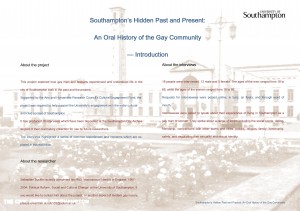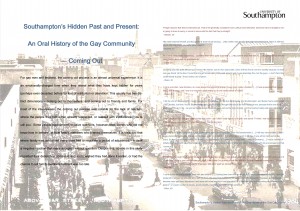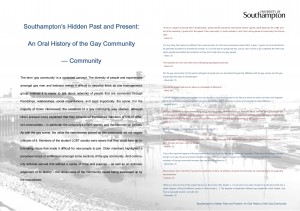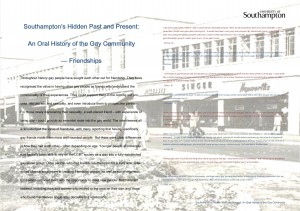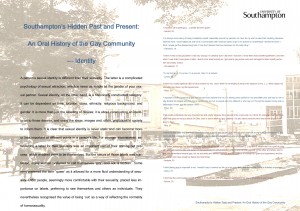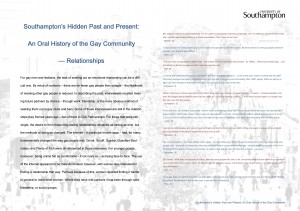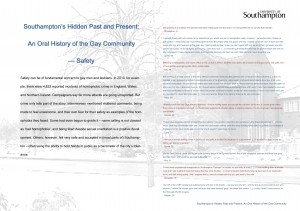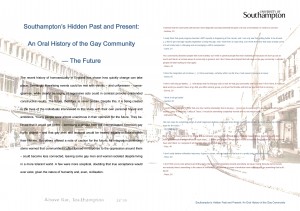‘Southampton’s Hidden Past and Present: An Oral History of the Gay Community’
August 1, 2013
by Laurence Georgin

The thesis concentrates on examining how images and representations have shaped a discourse on homosexuality, and how, in turn, this has shaped a gay and lesbian social and group identity. It explores the political, media, and social spheres to show how at any point during this period, images of homosexuality and identity were being projected in society, contributing to public ideas about sexual identity. This is broken down into three chronological time periods: a ‘gay liberation’ period during the 1960s and 1970s, a ‘visible subculture’ period during the late 1970s and 1980s, and a ‘becoming mainstream’ period in the 1990s and early 2000s. The central premise of this thesis is that identity is not just self-created, but is often the result of the images and messages we see around us. Thus while other historians have concentrated on how men and women have created and adopted their own sexual identities, this thesis looks at how images in society have influenced a public discourse on homosexuality which has helped create social and group identities. Taken together, these images help create a group identity, which often has much more relevance for how the majority of people understand what it means to define someone as a gay man or a lesbian in any of the three periods studied. Thus, a publically-perceived sexual identity is created which is used by both heterosexual people in forming ideas about gay life, and homosexual people in discovering their own sexuality and sexual identity.
The political/legal sections of the thesis use a wealth of primary sources including Hansard, Government reports, oral testimony, lobbying papers, manifestos, memoirs, public statements, newsletters, minutes, and social surveys. The media sections use newspapers, magazines, films, and television programmes, while the social sections rely on oral testimony, the records of gay groups, pictures, newsletters, maps, health campaign literature, memoirs, and news articles. Taken together, they provide examples of the dominant images being projected in the three time periods, by these three media. While this thesis recognises that there is no single gay identity at any one point – with various exclusions and competing ideas being presented – there is a more general picture framed in each of these periods. The conclusion recognises the role of images in society in creating sexual identities, while also examining the overall development of a gay social and group identity from its inception at the beginning of this period, to its place at the end.
After completing his postdoc project Sebastian Buckle (History postgraduate student and University of Southampton alumnus) produced a small display that was available to view in the South Corridor of Avenue Campus and also in the Library at Southampton Civic Centre in May 2013. To find out more, click on the posters below:
Contact for more information
Name: Sebastian Buckle
E-mail: scb103@southampton.ac.uk
Categories: History. Tags: Gay, Homosexuality, LGBT history, sexual identity and Sexuality.

